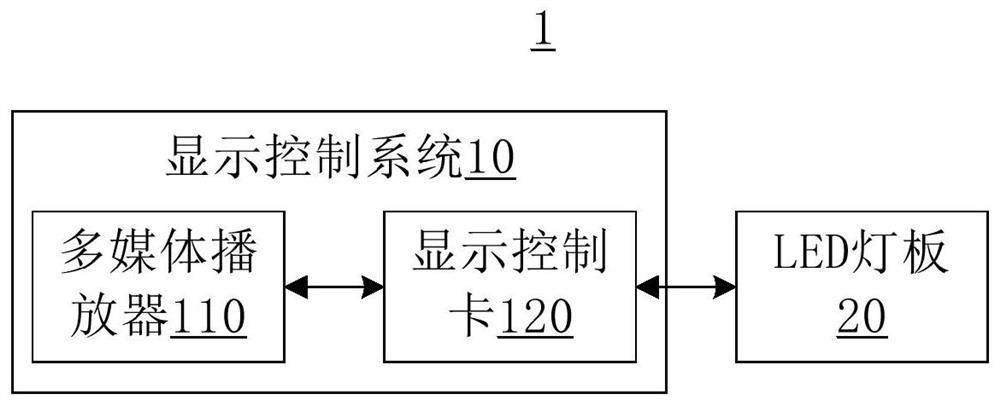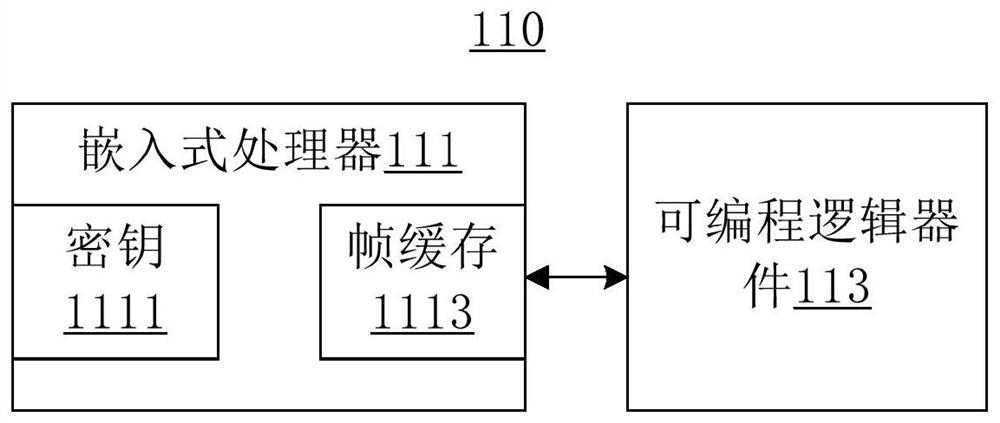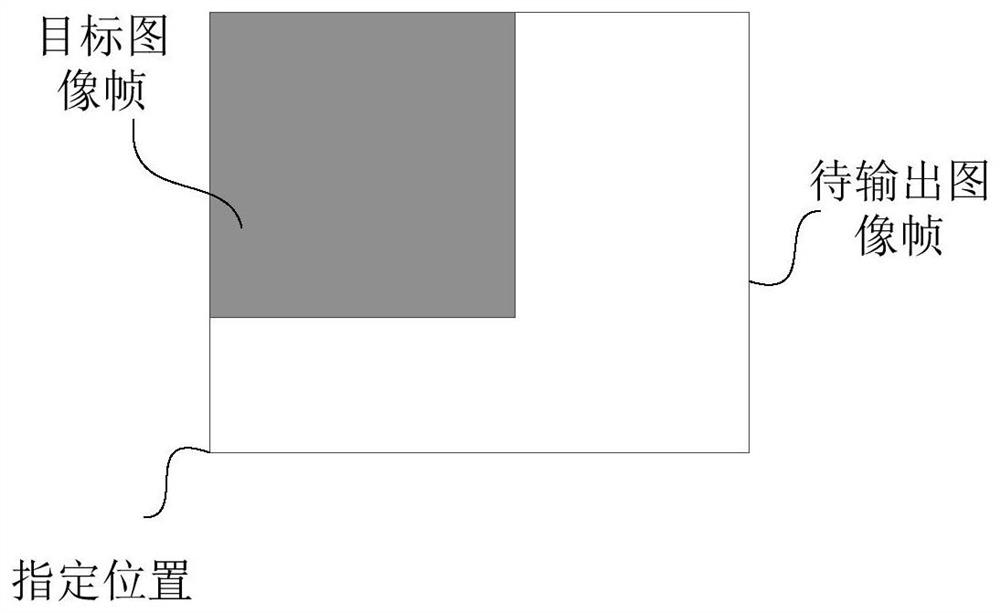Multimedia playing method and device, display control card and system and display system
A technology for multimedia playback and display control cards, applied in static indicators, instruments, etc., can solve the problem of inability to prevent video sources, and achieve the effect of avoiding illegal content playback and improving security and reliability.
- Summary
- Abstract
- Description
- Claims
- Application Information
AI Technical Summary
Problems solved by technology
Method used
Image
Examples
no. 1 example
[0024] see figure 1 , which is a schematic structural diagram of a display system such as an LED display system provided by the second embodiment of the present invention. The display system 1 includes, for example, a display control system 10 and an LED light panel 20 connected to the display control system 10 .
[0025] Specifically, the display control system 10 here can be, for example, an LED display control system. The display control system 10 includes: a multimedia playback device (or a sending card, a multimedia player) 110 and a display control card (or a receiving card) 120 connected to the multimedia playback device 110 . The multimedia playback device 110 analyzes and processes the input video data and sends it to the display control card 120 .
[0026] like figure 2 As shown, the multimedia playback device 110 includes, for example, an embedded processor 111 and a programmable logic device 113 connected to the embedded processor 111 . Embedded processor 111 ...
no. 2 example
[0034] see Figure 5 , which is a schematic flowchart of a multimedia playback method provided by the second embodiment of the present invention. The multimedia playback method according to the embodiment of the present invention mainly includes the steps:
[0035] S11: Parse the specified position pixel data in the input image frame as the first key;
[0036] S13: Verify the first key with a preset key to determine the validity of the input image frame; and
[0037] S15: After the verification is passed, output the pixel data of the input image frame in association with the preset key.
[0038] For the specific implementation process and technical effects of the multimedia playback method in this embodiment, reference may be made to the description of the foregoing first embodiment, which will not be repeated here.
no. 3 example
[0040] see Image 6 , which is a schematic structural diagram of a multimedia playback device 300 according to the third embodiment of the present invention. The multimedia playback device 300 includes a parsing module 310 , a verification module 330 and an output module 350 .
[0041] The parsing module 310 is used for parsing the specified position pixel data in the input image frame as the first key;
[0042] a verification module 330, configured to verify the first key with a preset key to determine the validity of the input image frame; and
[0043] The output module 350 is configured to associate and output the pixel data of the input image frame and the preset key after the verification is passed.
[0044] Further, the parsing module 310, the verification module 330 and the output module 350 are integrated into the programmable logic device of the multimedia playback device.
[0045] For the specific working process and technical effect of the multimedia playback dev...
PUM
 Login to View More
Login to View More Abstract
Description
Claims
Application Information
 Login to View More
Login to View More - R&D
- Intellectual Property
- Life Sciences
- Materials
- Tech Scout
- Unparalleled Data Quality
- Higher Quality Content
- 60% Fewer Hallucinations
Browse by: Latest US Patents, China's latest patents, Technical Efficacy Thesaurus, Application Domain, Technology Topic, Popular Technical Reports.
© 2025 PatSnap. All rights reserved.Legal|Privacy policy|Modern Slavery Act Transparency Statement|Sitemap|About US| Contact US: help@patsnap.com



